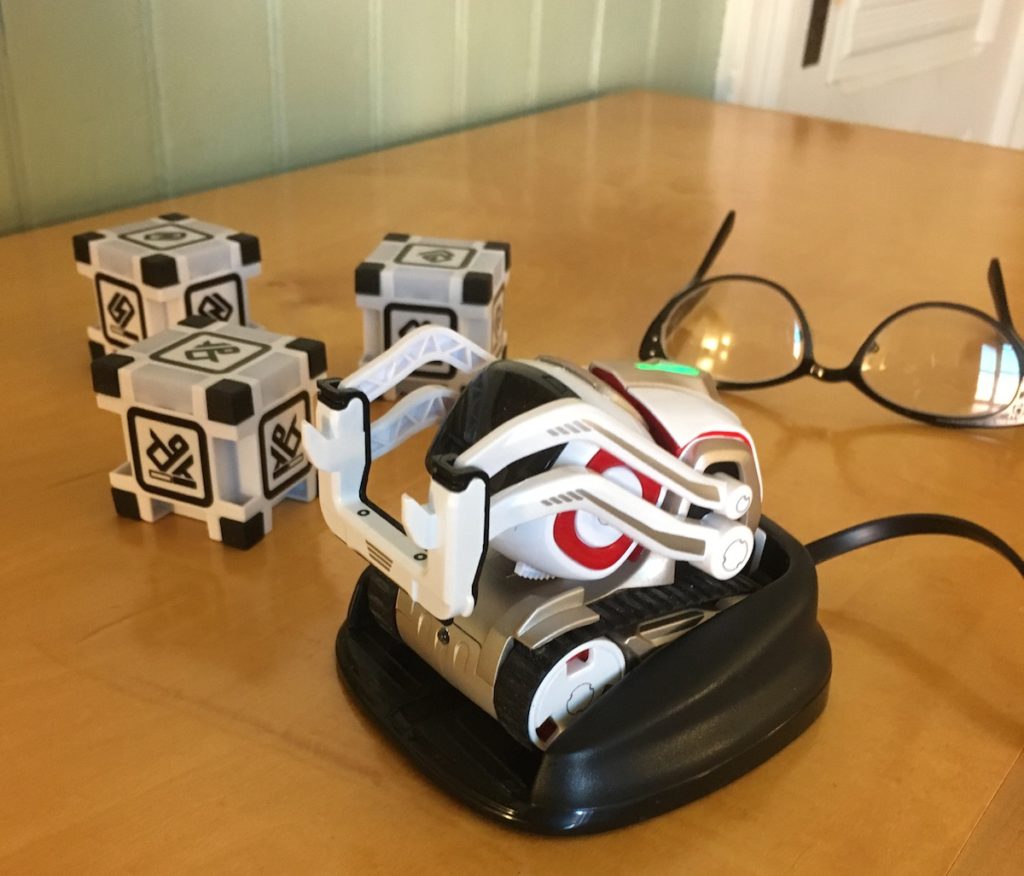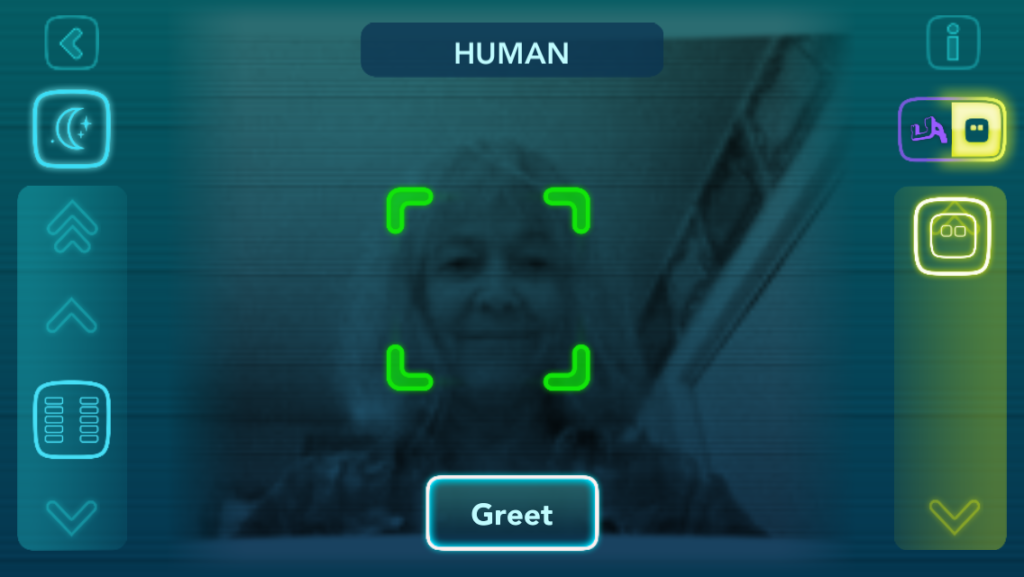
A few months ago I invited Cozmo, an AI-enabled robot, into my life to help me in my research on “smart toys.” Two young friends of mine, ages 7 and 11, helped me get Cozmo set up last week. Since they had their own Cozmo, they flew me through the app setup on my iPhone, helped troubleshoot the wifi, and then walked Cozmo through the initial steps of recognizing our faces and learning our names.
I can’t possibly write everything I need to say about Cozmo in one blog post…so I am starting The Cozmo Journal—I’ll do a series of blog posts (tagged #cozmojournal) in the months ahead exploring subtle and not-so-subtle things to consider about intelligent toys. (I’ve written about the research Stefania Druga and Randi Williams are doing on children and smart toys here. Give it a read, or a reread.)
But before I get ahead of myself, let’s start with the absolute basics—the company privacy policy. Seriously…when is the last time you actually read a privacy policy from start to finish? Bringing a smart toy like Cozmo into my home has given me the incentive to read the Privacy Policy with care.
Why does it matter? Cozmo is equipped with computer vision and facial recognition. The robot couples with a companion app on a smart phone. Here’s an iPhone screenshot I took of what Cozmo sees in Discover mode…Discover mode lets the operator see through Cozmo’s “eyes” and adjust the point of view (using the controls on the left and right). One of the first things my young friends and I did when we set up Cozmo was to help the robot learn to identify each of our faces and our names.

So…what happens to that data? A search on Anki’s support site returned this:
At Anki we treat privacy very seriously. Cozmo can neither record conversations nor share photos.
Images from Cozmo’s camera are processed in the Cozmo app to power his navigation and other features. They are not stored and do not leave the Cozmo app.
When you use Cozmo to recognize you, the Cozmo app may translate faces Cozmo sees into encoded facial features, a set of numbers not recognizable by a person. These numbers are not uploaded to Anki nor shared, and you can delete them anytime by visiting the Meet Cozmo section of your Cozmo App.
That’s good news.
The official Anki privacy policy goes into much greater detail. Read it. It’s good practice. As privacy policies go, my vintage avatar, Cyberneticia, gives this one 5 stars. But don’t take her word for it.

Alexis C. Madrigal, writer for The Atlantic, and father of a 4-year-old son, shares his experience with Cozmo in “Should Children Form Emotional Bonds With Robots?” He concludes the piece with this:
As I snuggled Cozmo into its charger, it was strange to think that the siblings and cousins and descendants of this little robot would one day, maybe quite soon, be everywhere. Self-driving cars, warehouse bots, autonomous drones—sensing, perceiving, reacting robots will be part of my son’s world. I feel about them as my parents did about computers: It will be necessary to understand these machines to comprehend the world. So now we have our first robot.
Speaking of descendants, since I started working on this post a few days ago, Anki, the makers of Cozmo, launched a Kickstarter for Vector—their newest robot character. Vector appears to be a mashup of Cozmo and Alexa with a few superpowers thrown in (and I’m certain—an even more complicated privacy policy). Please stay tuned for future entries in The Cozmo Journal. Next entry, I’ll write a little about why Cozmo? Hint: It has something to do with Seymour Papert.
Here’s an invitation: Write me and let me know if you’d like to read and discuss The Inevitable—Understanding the 12 Technological Forces That Will Shape Our Future, by the former editor of Wired, Kevin Kelly. I’m currently on Chapter 2—”Cognifying.” I’ll schedule a video call with you. If more than one of you respond, we’ll have a little informal “book group.”


